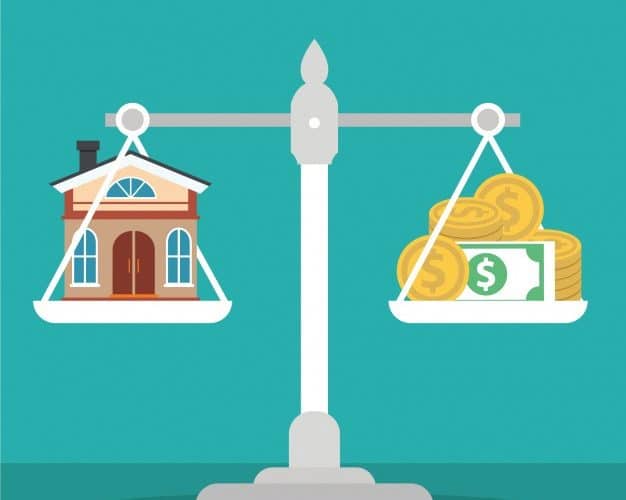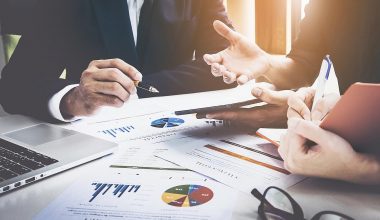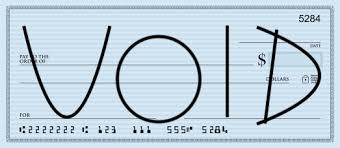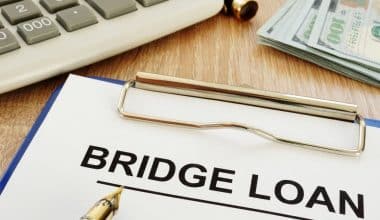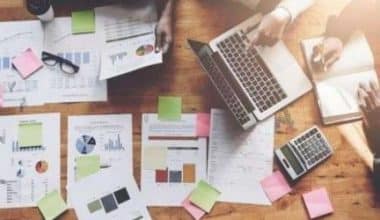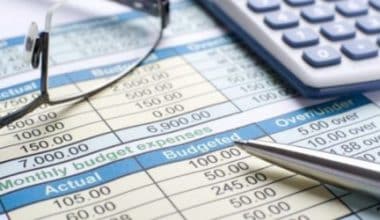Generally, as a business owner, you have to make transactions to get your firm off the ground and running. This may involve making purchases, taking on debts, as well as investing your own money. And while your business continues operating, you have to keep track of everything your business does, from debt collection to purchases to everything in between. Every business owner uses the balance sheet, also known as a statement of financial position, when making financial choices as one of the three main financial statements. This is where the accounting assets and liabilities debate comes into play. Assets and liabilities are two different things that a business owns or owes, and both appear on a company’s balance sheet or statement of financial position, outlining the health of such a business. Assets and liabilities are two distinct concepts, but how are they different?
Below is a detailed explanation of these two key aspects. Stay Connected…
What Are Assets and Liabilities?
Assets and liabilities are the two most basic items you can find on your balance sheet. While assets are things you can utilize to generate profit in the future, liabilities, on the other hand, are what you owe others. In other words, assets are what bring money into your purse, while liabilities are what take such money out.
A company’s assets represent the things it owns and the revenue they generate while liabilities indicate the money due to other people or organizations. Basically, there are two types of assets and liabilities: current and noncurrent.
However, the basic difference between these two elements of an accounting balance sheet is that; while assets have a future economic gain, liabilities provide associated future obligations. A high assets-to-liabilities ratio is a basis of a good and successful company since it implies a greater level of liquidity.
Understanding Assets and Liabilities – How Do They Relate?
In the business world, assets and liabilities frequently appear in the same sentence when discussing a company or business. Basically, your company’s balance sheet comprises these two key components: assets (revenue) and liabilities (expenses).
Liabilities reduce the value and equity of a business, whereas assets create value and equity. The more assets you have compared to liabilities, the healthier your company’s finances are. However, if your liabilities outweigh your assets, you may be on the verge of bankruptcy.
Assets have a positive net worth, whereas liabilities have a negative net worth. For the purposes of valuing a firm, investors typically employ a conventional accounting equation that compares the total assets and total liabilities of the company in question. Total assets generally appear on the left-hand side of a typical balance sheet. This may include both current and long-term assets, depending on the accounting techniques put into play. The different types of liabilities on the other hand; short-term and long-term come on the right side of the page.
There are a number of other problems to consider when it comes to the distinction between assets and liabilities. Besides, it is also important to look at a company’s ability to turn an asset into cash quickly. No matter how much money is in the bank, a company will be unable to pay its debts if it cannot turn its assets into cash. Slow-moving inventory is a specific difficulty in this situation. Equity, or the net residual ownership of shareholders in a corporation, is the sum of a company’s assets minus its liabilities.
The primary asset of a person may be their home. Having a mortgage to cover this is a liability. Whatever the owner’s equity in the home is the discrepancy here between the home asset and the mortgage.
What Are Assets and Liabilities in Accounting?
In accounting, the balance sheet of a corporation, one of the most critical financial statements for small businesses, is a combination of three key categories: assets, liabilities, and equity. Basically, a company’s assets and liabilities paint a picture of its financial health.
Generally, it is possible to track each and every transaction in an accounting statement all the way back to its original source. Liabilities and equity are used to maintain the proper ratio of assets. However, there are two types of assets in accounting: those owned by you and those owned by others.
The Accounting Equation
According to the accounting equation, a company’s total assets equal the sum of its liabilities plus the equity held by its shareholders.
The dual accounting system is said to be built on this simple relationship connecting assets, liabilities, and equity. The balance sheets are always in equilibrium thanks to the accounting equation.
The assets and liabilities on a company’s balance sheet determine its financial health, whether large or little. The third part of the balance sheet pertains to the company’s equity, often known as shareholders ’ equity. The accounting equation depicts the relationship between these three crucial elements.
Liabilities represent the company’s financial responsibilities, whereas assets reflect the corporation’s vital resources. A company’s assets come in two ways: through liabilities and through the equity of its investors. To put it another way, you’ll see it in your shareholders’ equity if you use debt financing, but you’ll see it in your liabilities if you use equity financing.
Nevertheless, you can use the accounting equation to determine if the company’s records and accounting properly represent its commercial transactions.
Accounting Formula
A balance sheet enables a business owner to identify the value of their firm and assess the company’s financial health.
Normally, you can calculate this net worth using the accounting formula (the fundamental accounting equation). Hence, to calculate this value, you can use the formula below:
equity = total assets – total liabilities
Equity refers to a company’s net worth (“capital”), which is the total amount of money it has.
The more positive equity there is, the better. This indicates the company is in crisis and that it must take measures to reduce liabilities and strengthen assets. Regardless, to ensure that a company’s liabilities are not outpacing its assets, it must evaluate the balance sheet on a regular basis.
What Are Assets and Liabilities on a Balance Sheet
A company’s financial statements and balance sheets typically include information on assets and liabilities.
Assets
An asset is a firm’s available products or resources that you can possibly use to produce cash flow, cut expenses, or give future economic benefit to the business or government. By utilizing assets, it is possible to boost an individual’s net worth or the value of a corporation.
While personal assets are those that belong to an individual, business assets are those that belong to a business. This may, however, include tangible and intangible assets that can be sold or utilized in the everyday running of a firm.
Liabilities
Liabilities are the sum of a company’s debts to third parties. Accordingly, accounts payable on a cash flow statement are the most prevalent category of corporate and small business liabilities.
There are three types of long-term obligations for a business: those due within a year; those due in the future over the course of several years; and those that are only due if specific conditions are met (“non-current liabilities.” There are many other sorts of liabilities, including long-term loans, credit card debt, depreciation on machinery, sales taxes, and personal income taxes.
The Balance Sheet
The balance sheet is an essential part of financial modeling and accounting because it is one of the three basic financial statements. Generally, the balance sheet shows the overall assets of the company, as well as the financing methods used to acquire those assets, such as debt or equity. There are many different ways to refer to it, including a declaration of net worth or financial situation. On the balance sheet, assets are equal to liabilities + equity.
Consequently, there are two sides to the balance sheet. The left side of a firm’s balance sheet shows all of its assets while the liabilities of such a firm as well as the equity held by shareholders are displayed on the right side.
There are two types of assets and liabilities: current assets and liabilities, as well as non-current assets and liabilities.
Current Assets
These are assets such as cash and items that can be transformed into liquid assets over the next 12 months. These may include the following:
#1. Cash and Cash Equivalents
The whole quantity of money you have on hand. Certificates of deposit (CDs) and commercial paper are examples of cash equivalents, which are short-term, high-quality investments.
# 2. Account Receivables
The amount owed to you by your consumers after they have purchased your goods and services on credit.
#3. Inventory
This involves all the purchases that will be resold to clients.
Expenses paid in advance:
Expenses that you’ve pre-paid, such as six months’ worth of insurance payments. Since the expense has already been done, such cash transactions are assets.
#5. Investments:
This includes stocks, bonds, and money market account balances. However, the vast majority of investments are considered current assets. Marketable securities are also in this category of investment. These are the funds you have outside but won’t receive for at least a year.
You can always determine the ownership of a company’s property by just looking at its current assets. However, in the event that you need to liquidate all of these assets, this may provide relevant information as to how much cash available they can potentially generate.
Noncurrent Assets
Noncurrent assets, also known as non-operating assets, are more long-term in nature and will not be sold for a profit within the year. There are two kinds of assets that fall into this category:
#1. Fixed Assets
Equipment and vehicles that generate revenue are examples of fixed or tangible assets. The value of these assets diminishes with time. As a result, the decrease in the value of fixed financial assets is recorded as a depreciation expense. In the fixed asset category, you can also find real estate (land). However, the land does not deteriorate in value.
# 2. Intangible Assets
Copyrights, patents, and intellectual property are examples of assets that don’t exist in the real world.
Current Liabilities
The top of the balance sheet shows current liabilities, which are money a firm must pay within a year. Here are a few of them:
- Accounts payable (monies you’re owing suppliers)
- Credit card balances
- Amounts due on short-term business loans, such as a line of credit,
- Income tax liabilities
- Payroll liabilities
These current liabilities are critical. This is because they can be used to measure a company’s performance based on whether or not it can pay its current liabilities with the money it generates. Besides, an unprofitable company may not be working at its full potential.
Noncurrent Liabilities
Obligations that an organization must pay over the course of a year or more are its “noncurrent liabilities.” This may include
- Mortgage repayments
- Long time loans
- Payments on a vehicle
The word “long-term” is sometimes used to describe these liabilities, even if they are not current. When companies don’t want to deplete their cash reserves, they employ long-term debt to borrow money, which they then invest in high-yielding assets.
Assets and Liabilities statement
An assets and liabilities statement is a balance sheet. A balance sheet is a financial statement that shows the assets and liabilities of a business and shareholder capital. A company’s financial health can be seen in its assets and liabilities statement. A year-end balance sheet depicts a company’s assets and liabilities as of a specific date.
It is a financial statement that shows a company’s assets, liabilities, and shareholder equity at a given time. An organization can calculate its capital structure and return rates using its balance sheets.
The statement typically contains data about a company’s assets, liabilities, and shareholders’ equity, as previously mentioned. Assets and liabilities should always equal shareholder equity. The name “balance sheet” comes from the fact that it should always show a positive balance. There may be issues if they don’t balance, such as faulty or misplaced data, inaccuracies in inventories or exchange rates, or improper computations.
A firm’s financial statements in accounting show the assets and liabilities of the organization. Investments at market value, interest due, and prepayments of expenses are all examples of assets. In addition to shareholder dividends, accumulated expenses, investment advisor and administrator fees, and transfer agent and investor service charges, liabilities include outstanding debt. The fund’s net assets, which are assets with fewer liabilities, are occasionally included in the asset and liability statement.
Conclusion
You can’t run a business without learning how to read financial accounts, which is the first step in being able to gauge performance. The more transactions that you make, the more you’ll be able to observe how each one affects the whole firm. Hence, you’ll start increasing your equity claims on assets over liabilities.
In accounting, the financial statement and other financial records frequently display the company’s assets and liabilities, which are important considerations for managing the company’s finances. These statements and the data they provide can be easily compiled and tracked by accounting software.
Likewise, you can use a balance sheet to see how your firm is doing financially. Each month, take a look at your balance sheet to see how your small business is doing financially. By utilizing the balance sheet data, you can easily obtain better judgments and more earnings.
FAQs
Liquidity: What is it and how does it work?
As a rule of thumb, assets are categorized into categories based on how quickly they can be converted into cash. Cash is your most readily available liquid asset since you can use it to settle a debt right away. If you’re looking for something that’s more difficult to sell (like a factory), you’re better off with an illiquid asset.
Is your house a valuable asset or a burden?
An asset is anything that can generate a future economic gain, but a liability is something that must be met now. The primary asset of a person may be their home. Having a mortgage to cover this is a liability.
Why are assets and liabilities statements important?
Administrators, shareholders, consultants, and policymakers all use the balance sheet to gauge the financial strength of a company. Income statements and cash flow statements usually work in conjunction with this statement.
What Is the Accounting Equation for Shareholders’ Equity?
The overall financial value of a firm is its “shareholders’ equity.” In other words, it is the amount that would remain over after selling all of a company’s assets and paying its debts in full. They would receive back the shareholders’ equity in the form of a dividend.
- Balance Sheet vs. Income Statement: Examples, Differences & Relationship
- FINANCIAL REPORTING: All You Need to Know With Examples (+ Quick Easy Tools)
- Balance Sheet vs. Profit and Loss Statement: Relationships & Differences
- Accounting balance sheet explained: samples, templates, examples, and definition
- BUILDING WEALTH: Simple Wealth-Building Strategies
